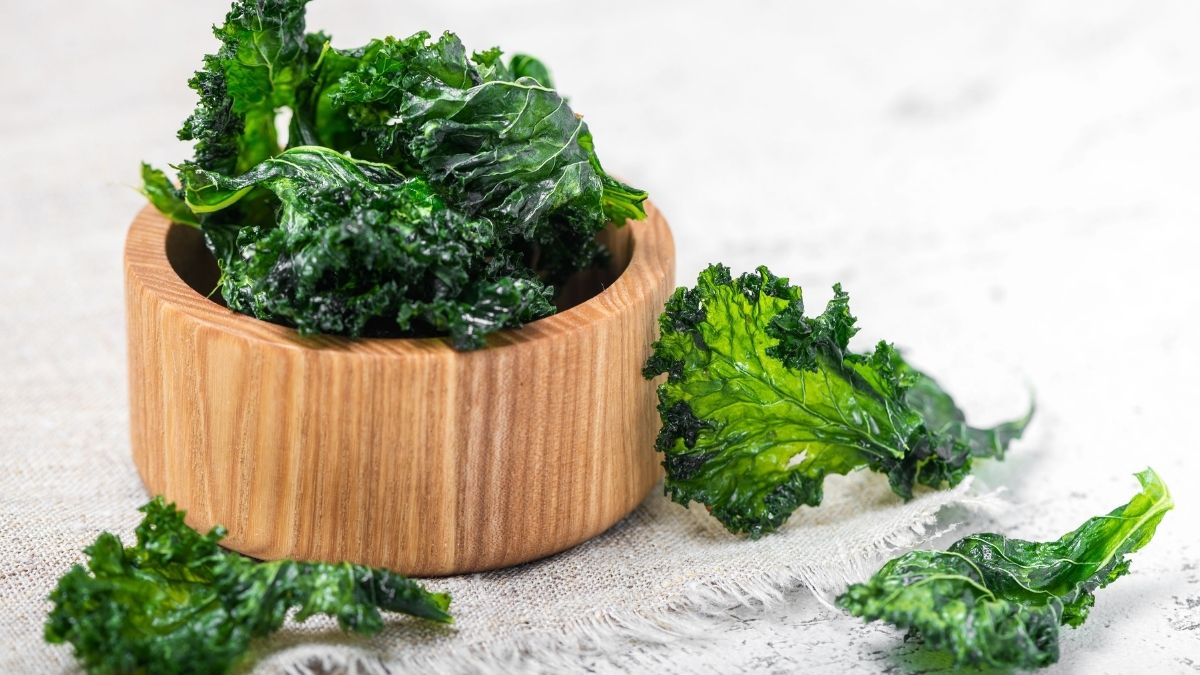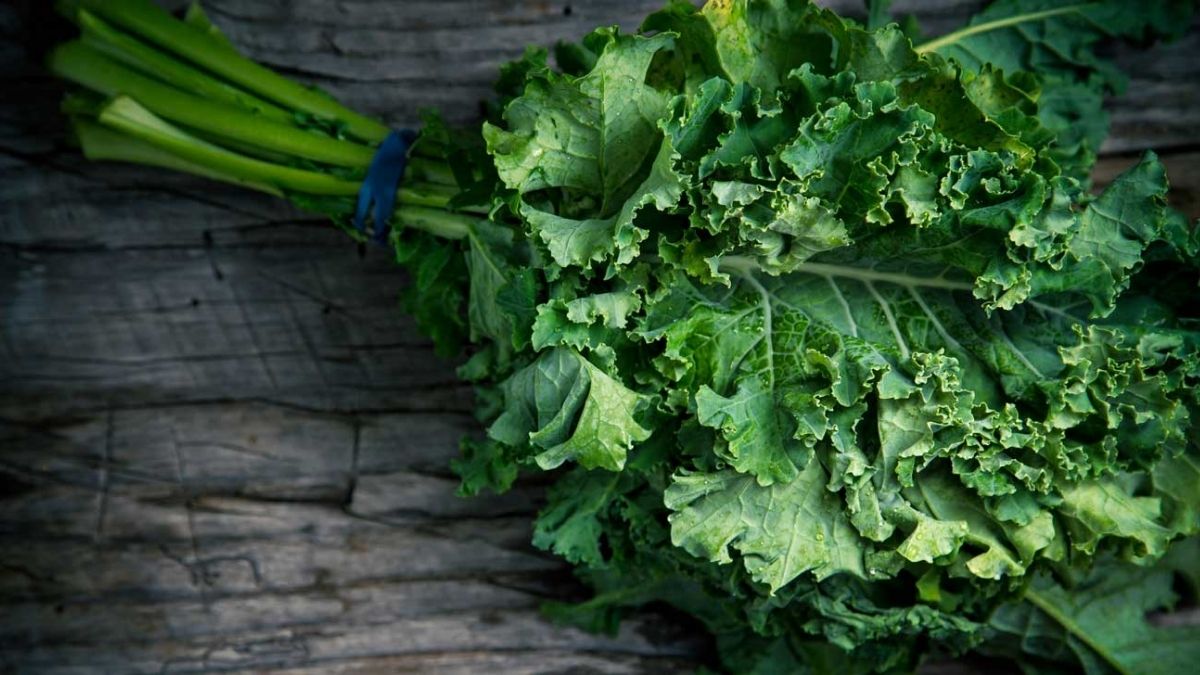Kale is a leafy green vegetable that has grown in popularity in recent years as a result of its numerous health benefits. Kale is not only low in calories and high in fiber, but it is also high in essential vitamins and minerals that are essential for overall health and well-being. In this article, we’ll look at the nutrition facts for kale, examining the various nutrients found in this superfood and the potential health benefits of including it in your diet. Whether you want to improve your digestion, boost your immune system, or simply add more nutrient-dense foods to your diet, kale is a great choice that can provide a variety of benefits. So, let’s get started and look at all of the ways kale can help you achieve optimal health and wellness!
A serving of kale, like cruciferous vegetables including collard greens, broccoli, and Brussels sprouts, is high in nutritional fiber. This complex carbohydrate is exclusively found in plant-based meals and is essential for digestive health and making you feel full and satisfied after a meal. Put another way. You won’t be reaching for snacks later. While kale isn’t a complete protein source, it may be combined with your favorite meat or plant-based protein to make dishes feel more substantial. Salad toppings like beans, eggs, and chicken are quick and easy, while kale soups with pork or beef are robust and fulfilling.
kale Nutrition Facts
Another reason for kale’s popularity is its low carb and calorie content. Another great reason to include it in your meal planning is that it is highly nutrient-packed, and it provides vitamins, minerals, complex carbs, and fiber, among other things. Here are five kale health benefits.
Here’s a table for kale nutrition facts:
| Nutrient | Amount per 1 cup (67 g) of cooked kale |
| Calories | 49 |
| Total Fat | 0.6 g |
| Saturated Fat | 0.1 g |
| Trans Fat | 0 g |
| Cholesterol | 0 mg |
| Sodium | 31 mg |
| Total Carbohydrate | 10 g |
| Dietary Fiber | 2.6 g |
| Total Sugars | 1 g |
| Protein | 4.3 g |
| Vitamin D | 0 IU |
| Calcium | 177 mg |
| Iron | 1.1 mg |
| Potassium | 296 mg |
| Vitamin A | 133% DV |
| Vitamin C | 134% DV |
| Vitamin K | 684% DV |
Note that “DV” stands for “Daily Value,” which is the recommended daily intake of a nutrient for a 2,000-calorie diet. The mentioned percentages are based on a 2,000-calorie diet.
What is Kale?
Kale is most comparable to wild cabbage in the cabbage family because the stalks are made of loose, elongated leaves rather than neatly packed, spherical heads. Curly kale and baby kale are the most popular kale kinds seen in supermarkets. Curly kale can be fibrous when raw. Therefore some people prefer to eat it cooked; baby kale has a more soft leaf and is preferred in salads. Kale provides a boost of vitamins and a splash of color and texture to recipes. It’s easy to make and affordable to buy.
What are the Health Benefits of Kale?
Kale is rich in nutrients, justifying its reputation as a superfood. Kale is a fantastic way to improve your consumption of nutritious leafy greens because it is high in fiber, vital vitamins, and minerals. Phytonutrients are plant-based compounds with anti-inflammatory properties that may aid in the prevention of chronic diseases such as heart disease.
1. Cancer Prevention
Kale includes cancer-fighting phytonutrients, which are plant-produced substances known as phytochemicals. These substances may reduce chronic disorders such as cancer and cardiovascular disease. Kale includes the anti-cancer flavonoids quercetin and kaempferol and the terpenoids alpha, beta, and gamma carotene, lutein, and zeaxanthin. Furthermore, because of their demonstrated usefulness in the body, the American Cancer Society suggests eating phytochemicals in meals rather than supplements.
2. Vision
Vitamin A in kale helps to maintain eye health and to see better for longer. 100 mcg of vitamin A is found in 2 cups of raw kale, roughly 11% of the Daily Value (DV).
3. Strong Bones
Kale, like spinach, is high in calcium, which is essential for bone health. Not only that, but it’s also high in vitamin K, which promotes bone density and lowers the chance of fracture. About 160 mcg of vitamin K, or more than 130 percent of the daily value, is found in 2 cups of raw kale.
4. Healing & Immunity
Kale is high in vitamin C, which promotes healthy growth, immunity, and wound healing. 2 cups of raw kale provide 40 milligrams of vitamin C, or 44 percent of the daily value.
5. Heart Health
Kale consumption may also lower the risk of cardiovascular disease. A meta-analysis of eight research discovered that consuming lots of leafy green vegetables is linked to a 15% lower risk of cardiovascular disease.
How to Cook with Kale?
The stiff, slightly woody kale stems should be removed before eating, whether fresh or cooked. This can be accomplished by simply cutting along both sides of the rib with a paring knife. Kale should also be well-cleaned before eating or cooking since its curly leaves can collect a lot of sand, dirt, bugs, and other contaminants.
Raw kale is frequently sliced and added to salads; an oil-based dressing can help soften the ridged leaves, but you can also massage the leaves with salt and an acid like lemon or vinegar to make them more supple. You can also stir-fry, steam, sauté, boil, or bake kale. The sturdy leaves of kale make it a popular ingredient to soups and stews because they can endure boiling without becoming mushy. As a simple side dish, kale can be sautéed with garlic, salt, and pepper until wilted.
What are the Types of Kale?
Kale comes in numerous colors, from deep green to purple to white and pink, and there are as many methods to prepare it as there are colors. Unlike cabbage, kale grows in long stalks like romaine lettuce. The most common types of kale are curly, purple, and Dinosaur or Lacinato.
Curly Kale is a spicy, earthy green with dark, strongly ruffled leaves. If you like a milder taste, use baby kale.
Purple Kale: Redbor, sometimes known as purple kale, has rich purple stems and vivid, ruffled leaves in red and maroon. It tastes like cabbage when raw but turns sweeter and softer when cooked.
Curly Kale: You’ve probably seen store curly kale. Before cooking or eating, remove the leaves from this bitter, woody kale. This variety works well with sautéing, steaming, or other leaf-softening methods. To tenderize raw curly kale for salads, soak it in an acidic dressing like citrus or vinegar.
Lacinato Kale: The most adaptable. Its mild flavor makes it suitable for most greens. No need to remove woody stems either.
Red Kale: With its nutty flavor and tough leaves, red kale is best used in recipes after being boiled down a little. The leaves and stems can be softened by sautéing them or adding them to soups. When mixed with other greens, the softened purple-red stems appear stunning.
What are the Risks of this Leafy Vegetable?
While there is no doubt that Kale is beneficial to many of our body parts and functions, excessive ingestion may have negative consequences. Too much of this vegetable might produce diarrhea, bloating, or gas, which can aggravate rather than help the digestive system. People with hypothyroidism and kidney illness should consult a doctor before eating this vegetable, and this is because some chemicals in the vegetable can interfere with thyroid hormone production.
A damaged kidney cannot remove excess potassium. As a result, someone with kidney illness should consume this vegetable in moderation. The vegetable may affect certain drugs (beta-blockers, blood thinners). When eating this or any other leafy vegetable, carefully wash it to ensure no microscopic insects are left on the leaves.
Why is Kale a Superfood?
Kale is considered a superfood because of its high vitamin and mineral content. Different substances in it are good for your health. Vitamins A, C, and K are abundant in kale; one cup of chopped kale contains far more than the recommended daily dose of these vitamins.
Conclusion
Kale has several health advantages and protects the body from various ailments. Knowing the health benefits of kale, it’s essential to include it in your daily diet. On the other hand, Kale is most beneficial when ingested in the proper amount. Adding this vegetable to your diet in the shape of a salad or a drink every few days would benefit you.
Kale is a dark green, leafy cabbage family vegetable. It is easy to grow and can endure cold temperatures in various climates. Because of its hardiness and flexibility, this leafy green has exploded in popularity, moving from the health food shop to the mainstream. Kale is a popular vegetable in the United States, Europe, and other parts of the globe, including Africa, South America, and Asia. Purple, white, and even pink are some of the various colors growing with dark green. Kale is delicious raw in salads, stir-fried, sautéed, and added to soups and stews.

